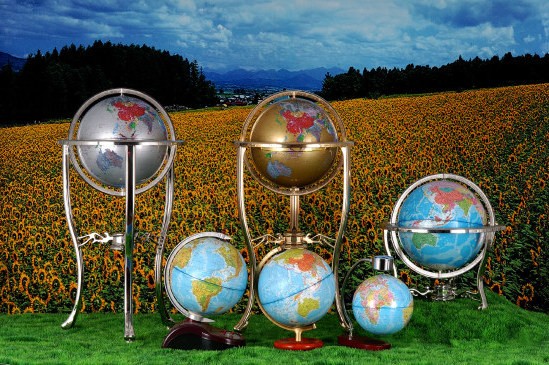Working on this project can be fun as well as educational because while making it you can gather abundance and in depth knowledge of the world you live in. You can learn where your sea and oceans are spread and their names ,about longitude and longitude, their definitions and about the southern and northern hemisphere and even about the equator and all the countries around you It can be a nice geographical tour for you sitting in the confines of your home and enjoying it too.
WHAT YOU’LL NEED
- ball preferably made of foam
- mod podgy of diameter eight inches
- green and blue tissue paper
- sketch pen or marker
- atlas or internet

INSTRUCTIONS
- Cut strips measuring one by six inches from the blue paper. From the green sheet cut strips measuring one by one inch to depict water we will use the blue strips and to depict land the strips used will be green.
- Now on your foam ball apply with your paint brush Mod Podgy decoupage medium from bottom to top around the ball one quarter of way around. This becomes your globe.
- The part of the globe you have applied decoupage; place and press the blue paper strips on it.
- Now follow the procedure in the second and third step till you have covered the entire ball with the strips of the blue paper. This process has to be repeated once again then let your ball which is completely blue now stand for one to two hours approximately till it completely dries.
- When the globe is completely dry around the center of the ball, make a horizontal line. This indicates the Equator. Now perpendicular to the line you have drawn for the equator draw a line horizontal to it which would indicate the prime meridian. These are the lines which would help as a guide to be able to make out the location of the continents on the map.
- Take out a print from the internet of the world map or the globe. You can even refer to an atlas. By making use of the world map and taking the meridian lines and equator as your referral points you can start identifying the location of the five oceans, the Arctic, Indian, Atlantic, Southern and Pacific oceans.
- Now start with North America and mark the outline. It helps to locate the rest of the continents. Perfection is not the most important thing here, learning is. Helping the child understand the basic location is more than sufficient.
- Lay down the decoupage on the globe within the areas that have been sketched along with green tissue paper. Let it dry for around an hour.
- Finally apply some mod podge on the globe with a brush. This acts as both varnish and glue. Let it dry overnight.